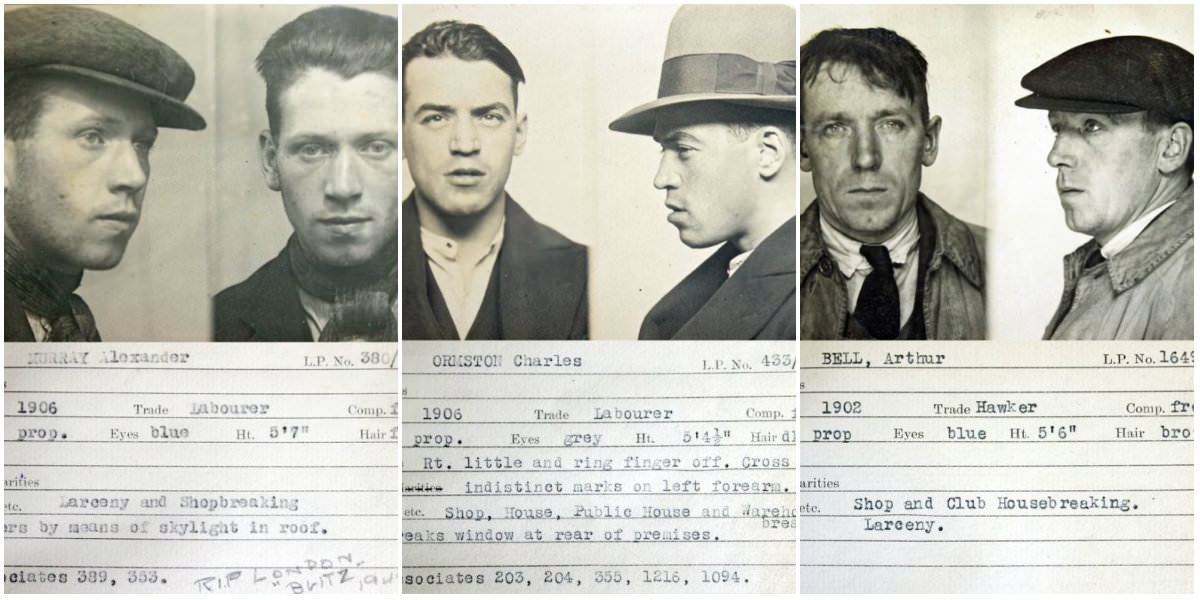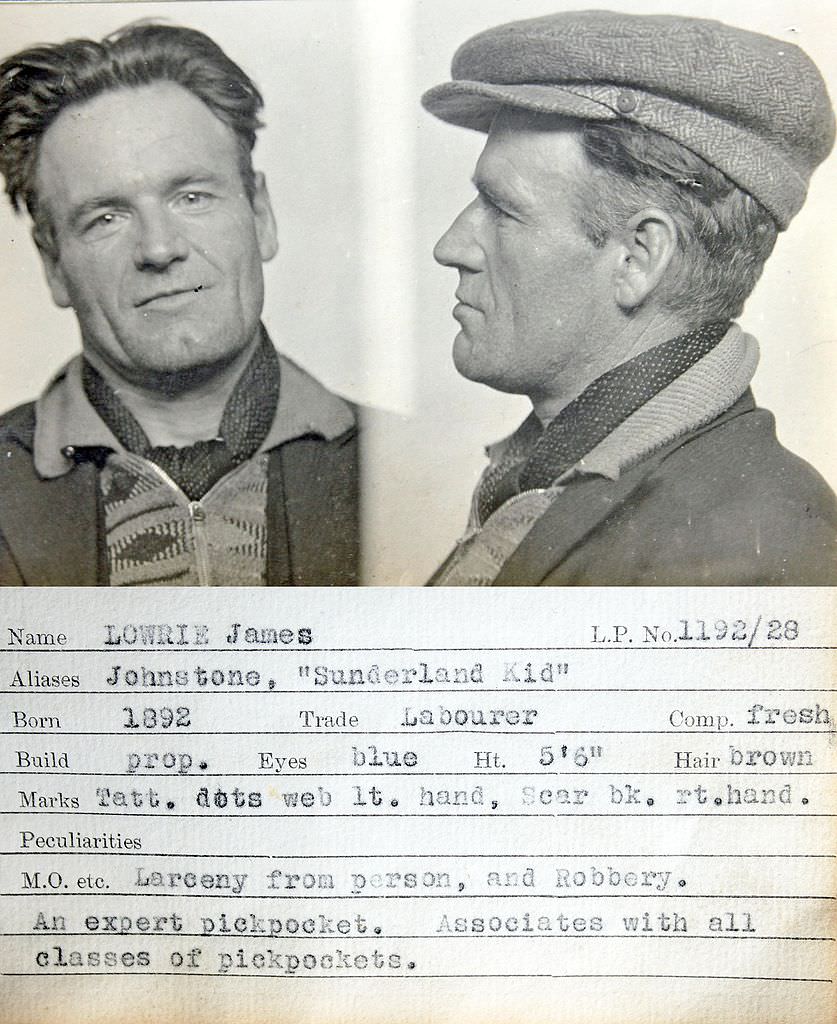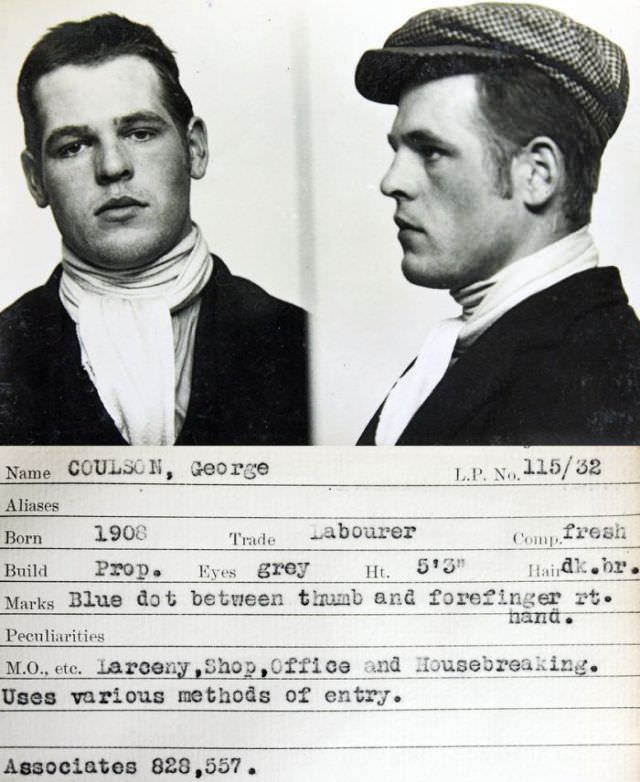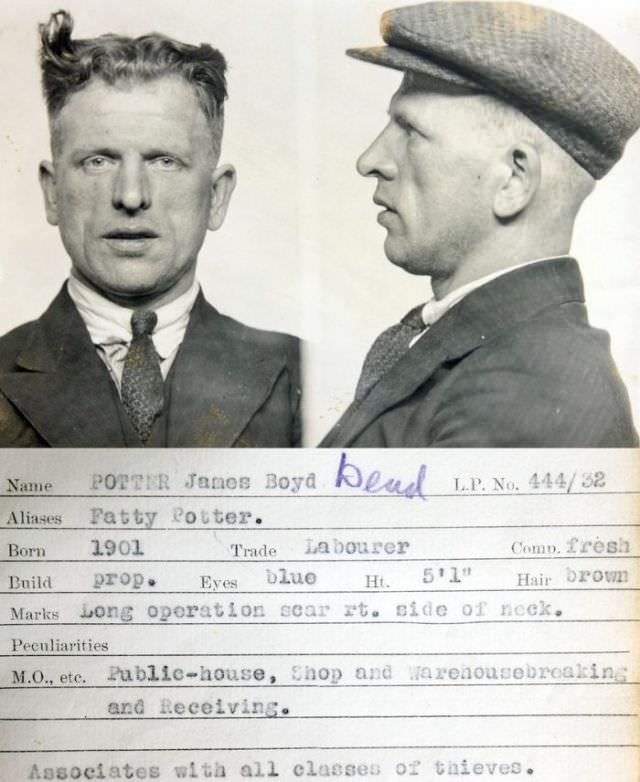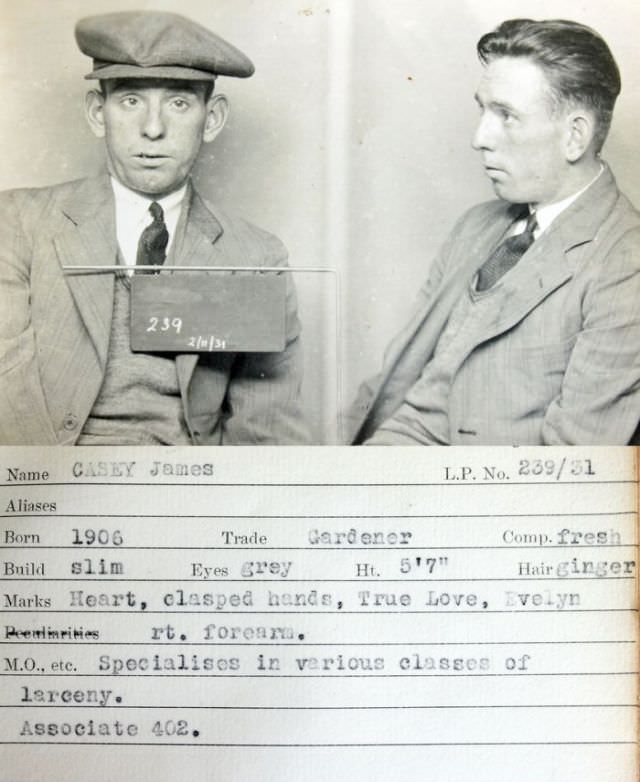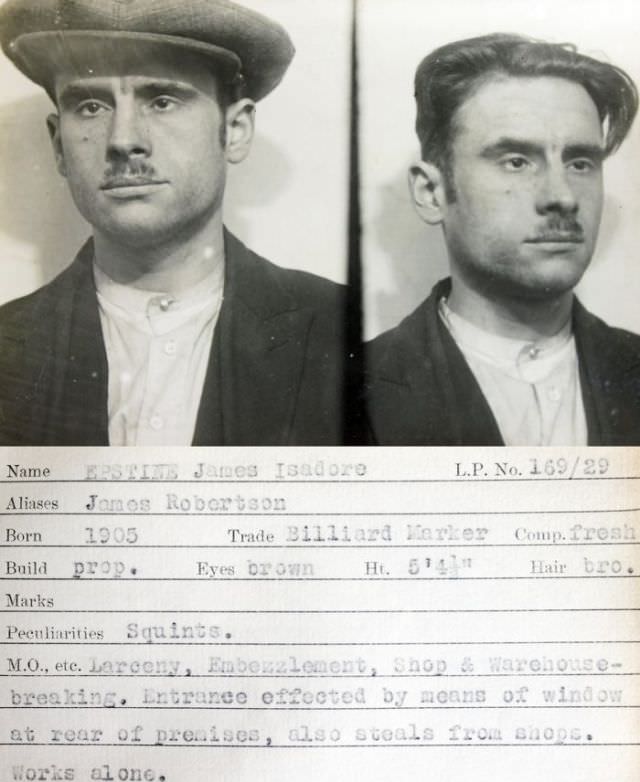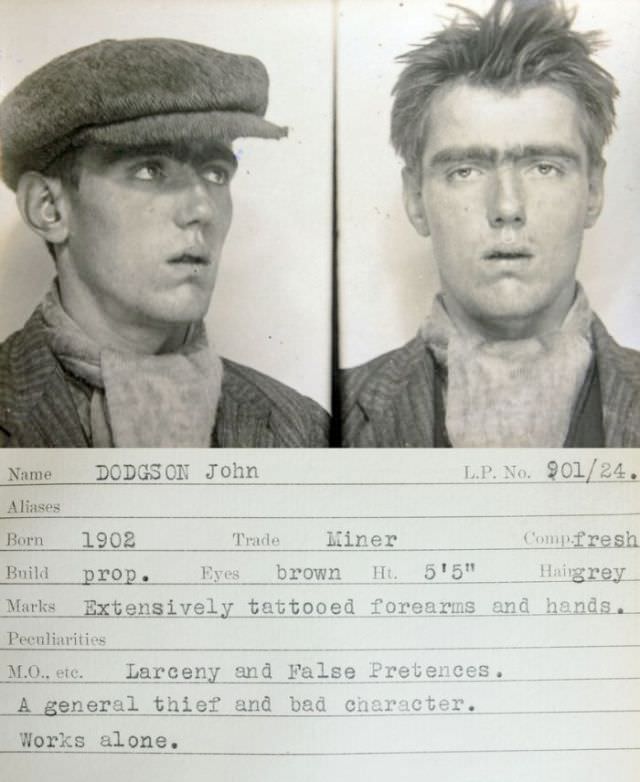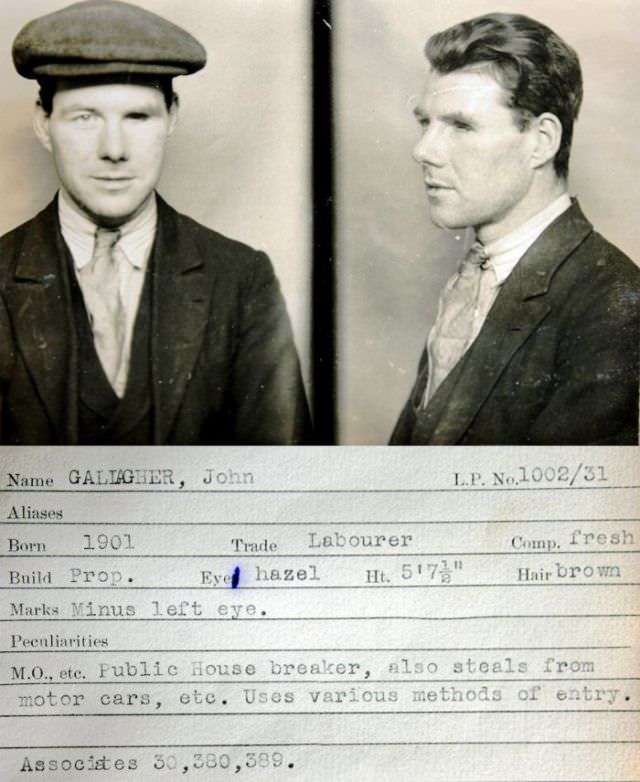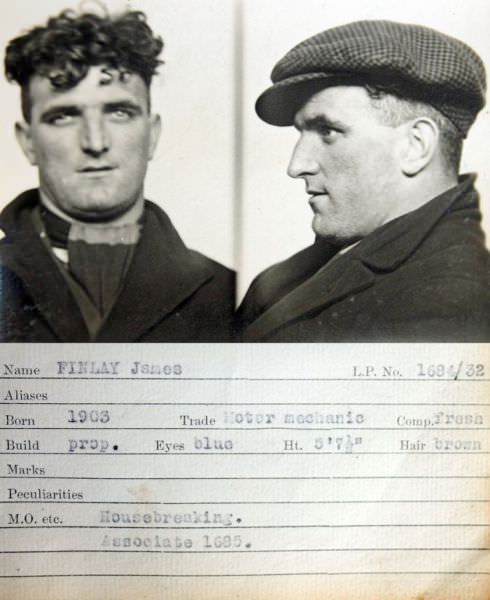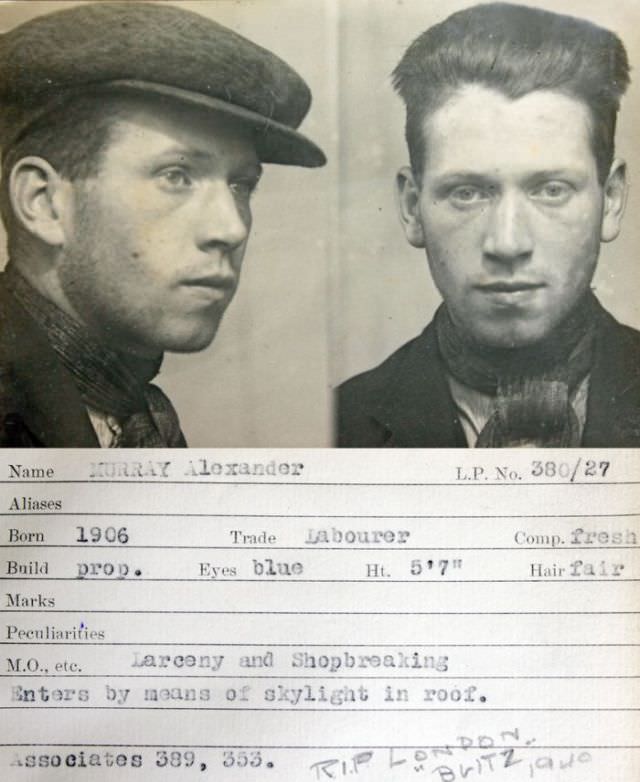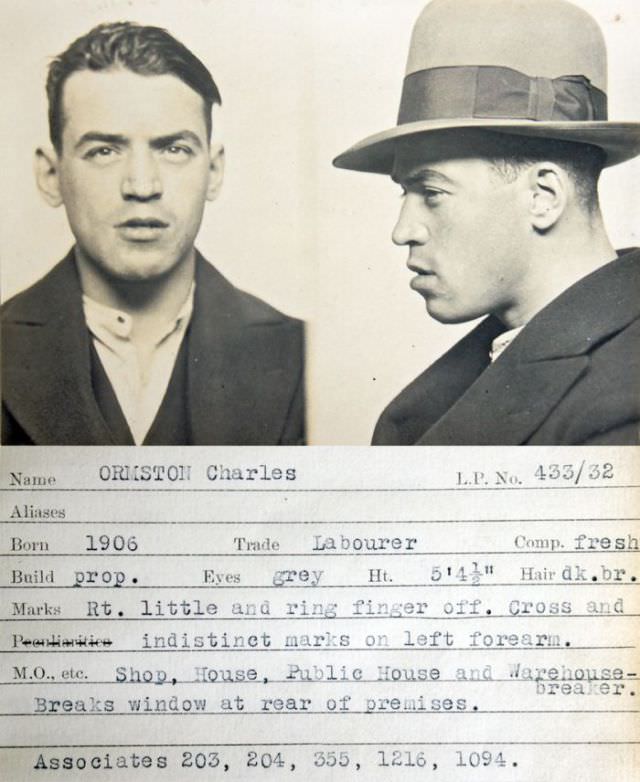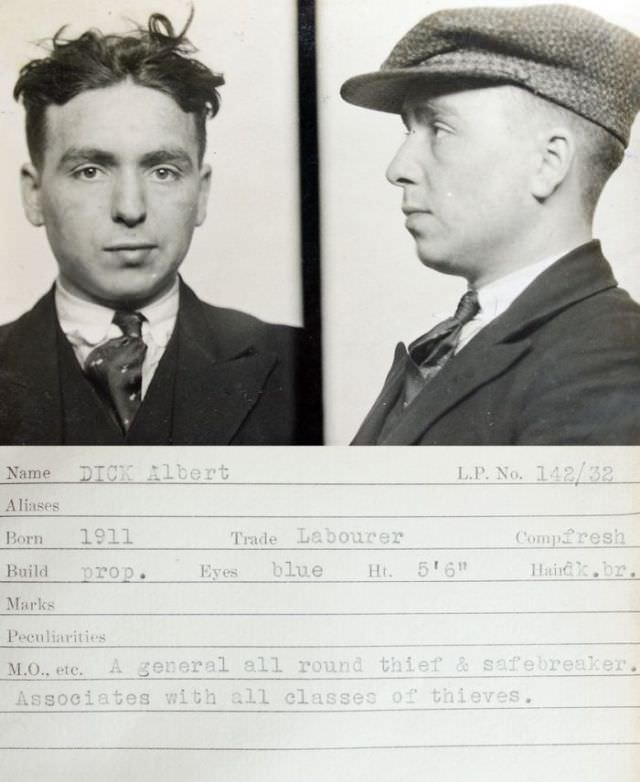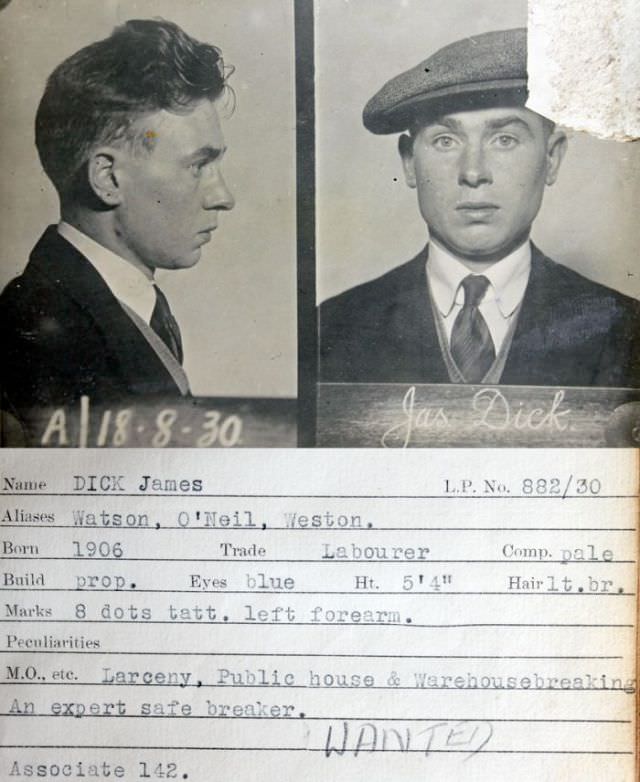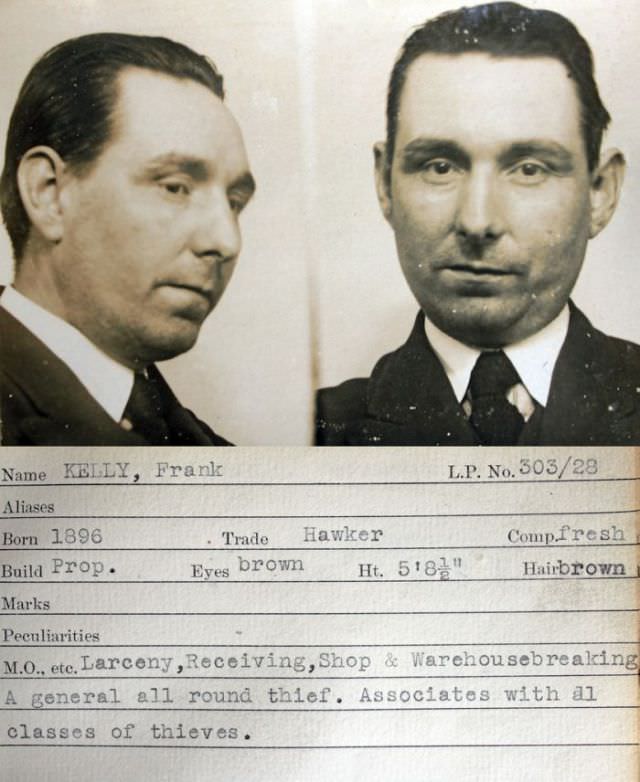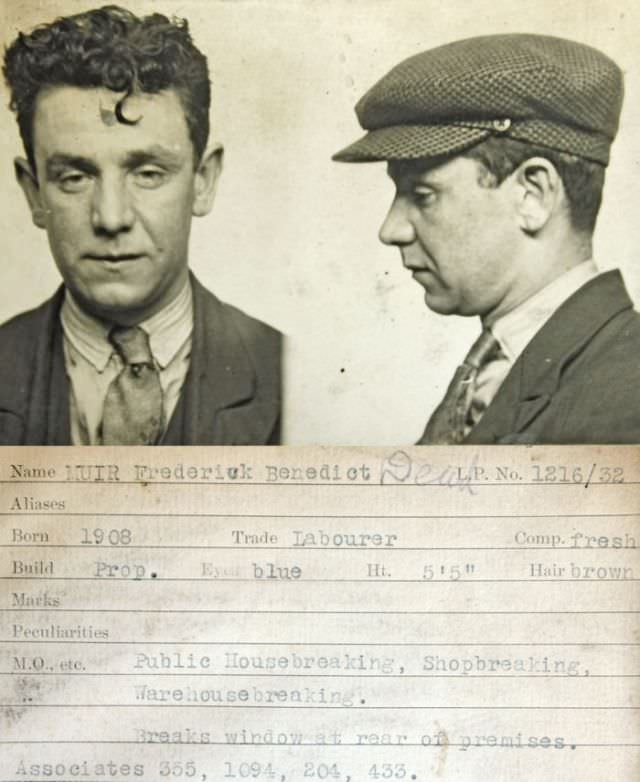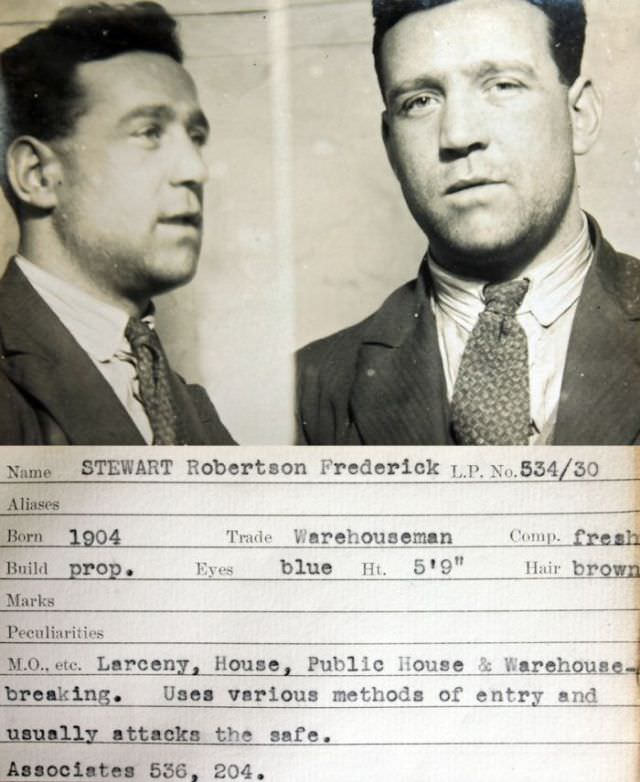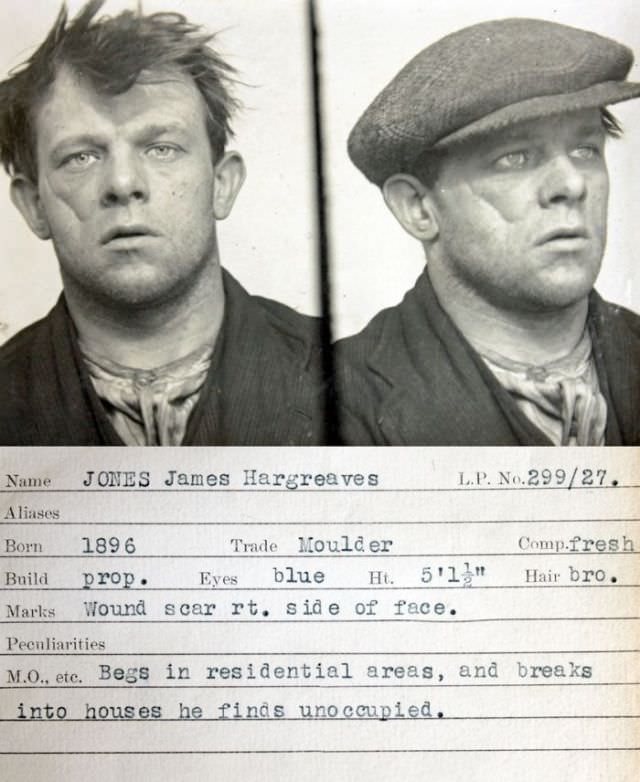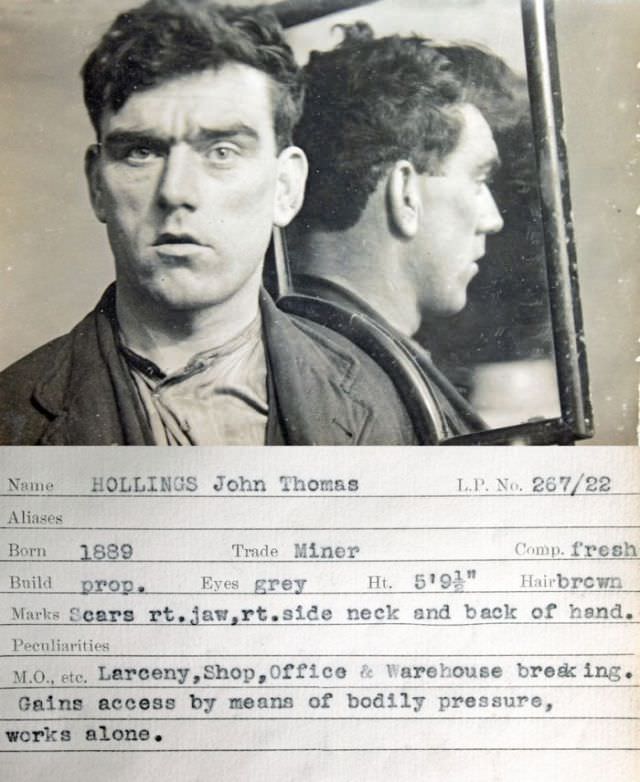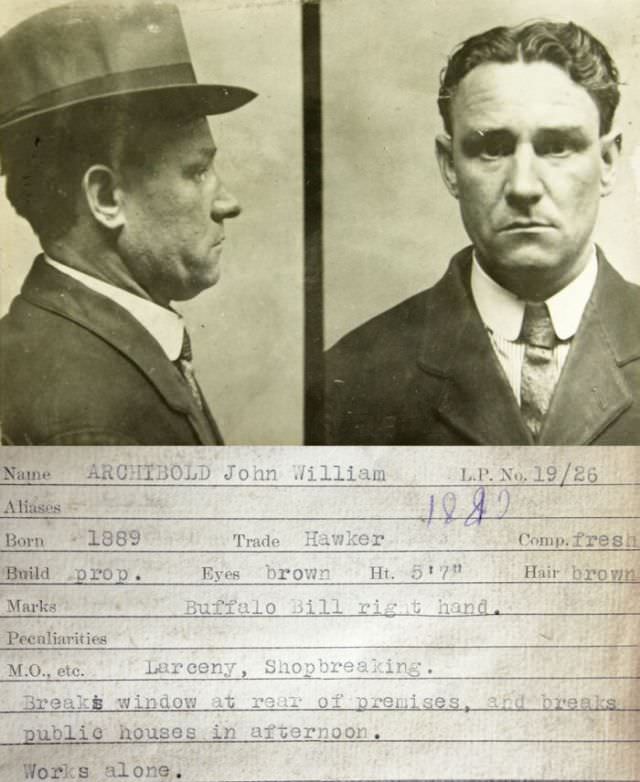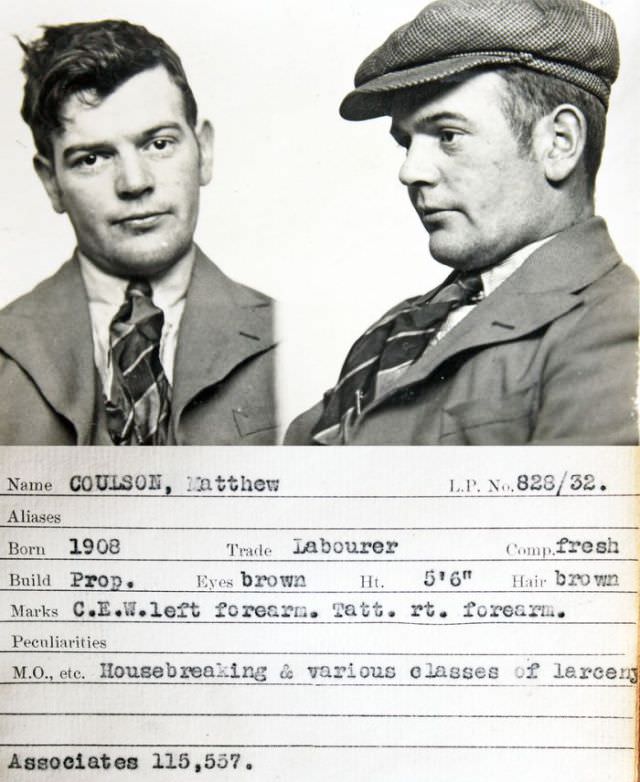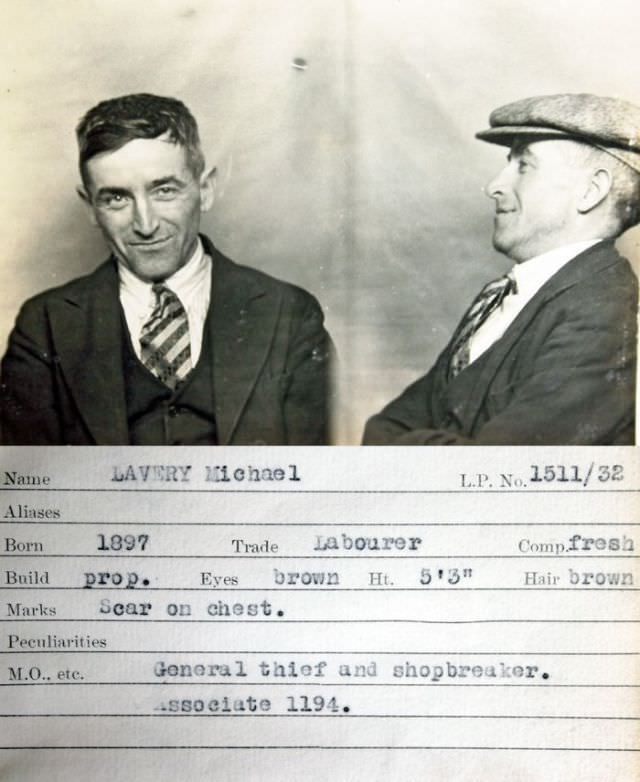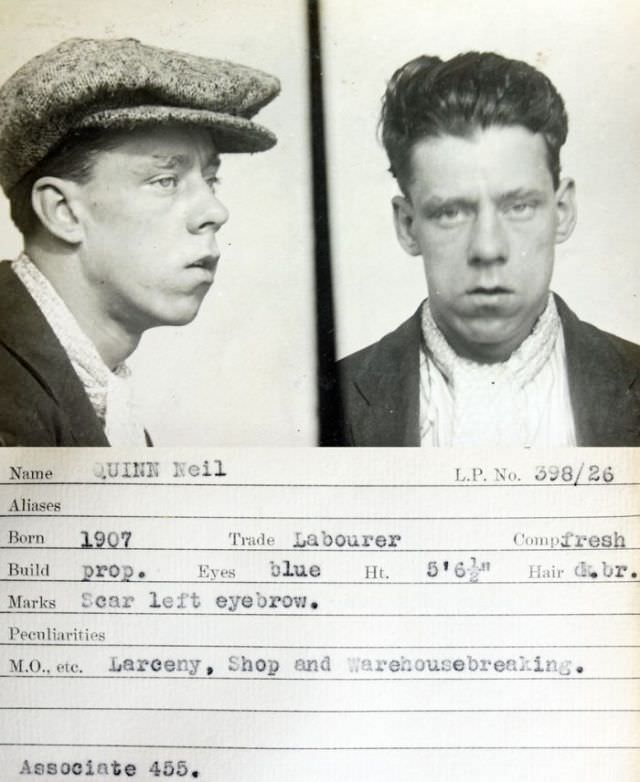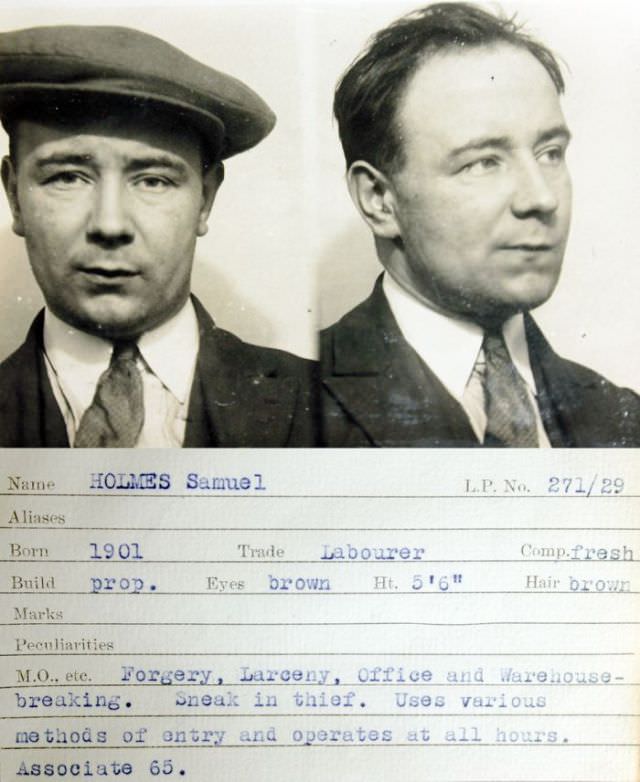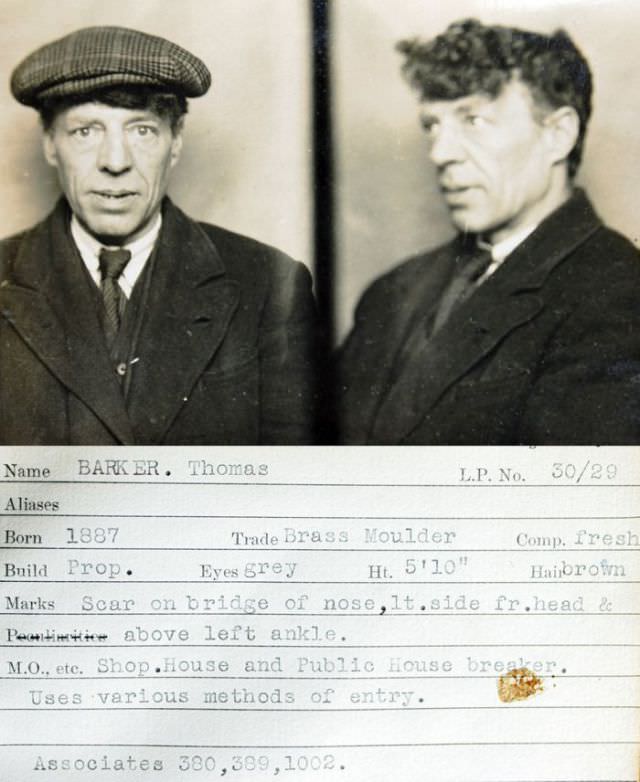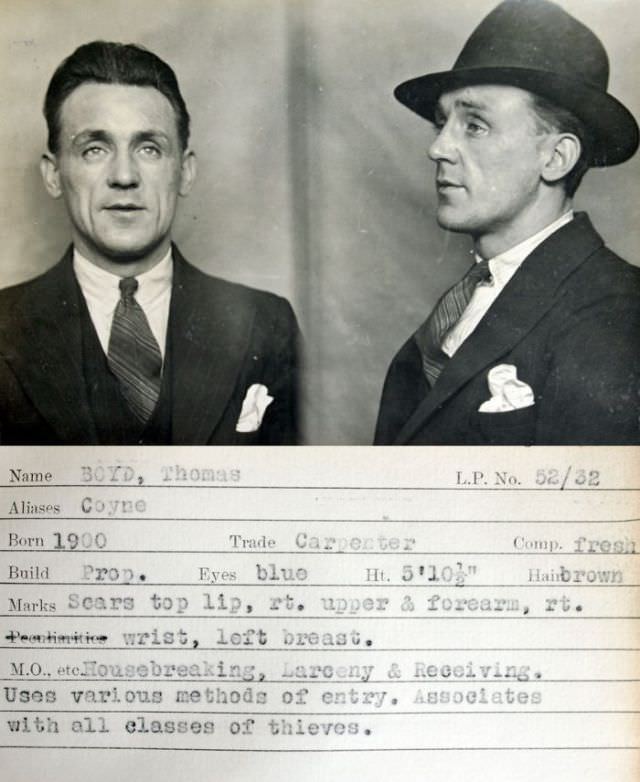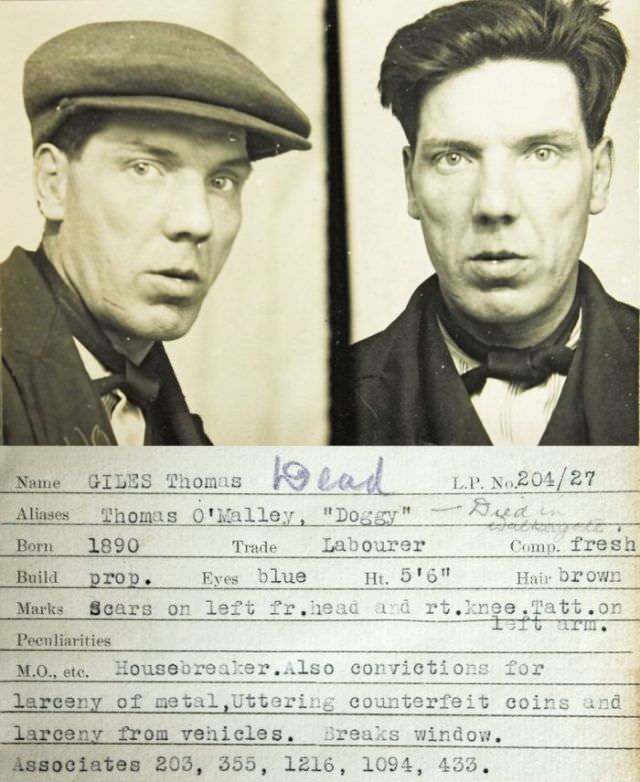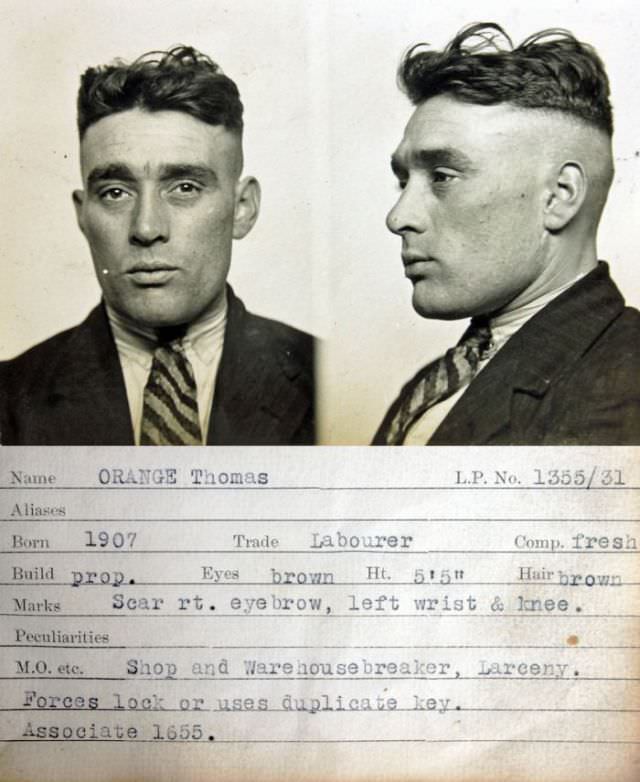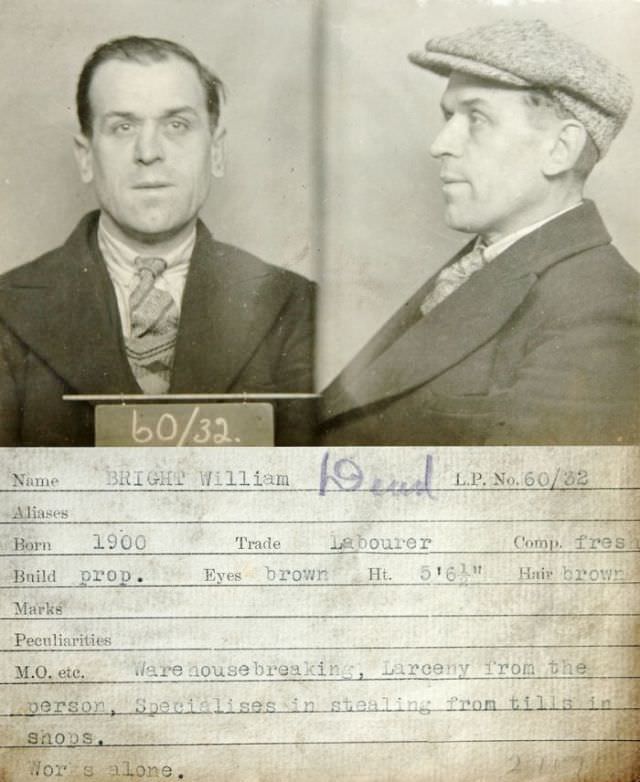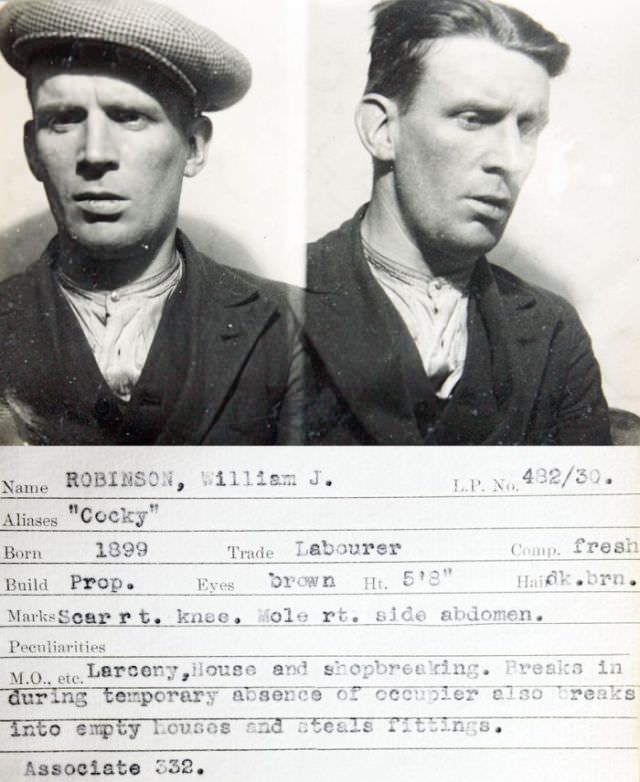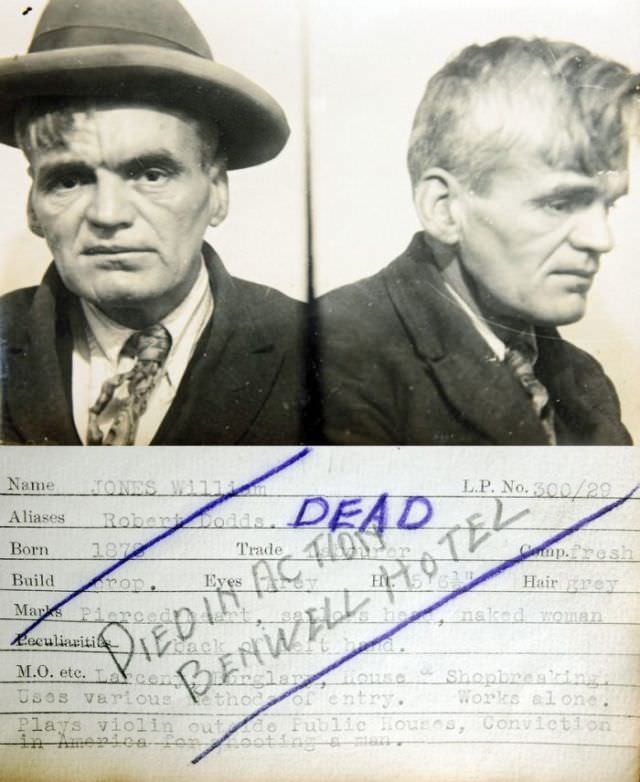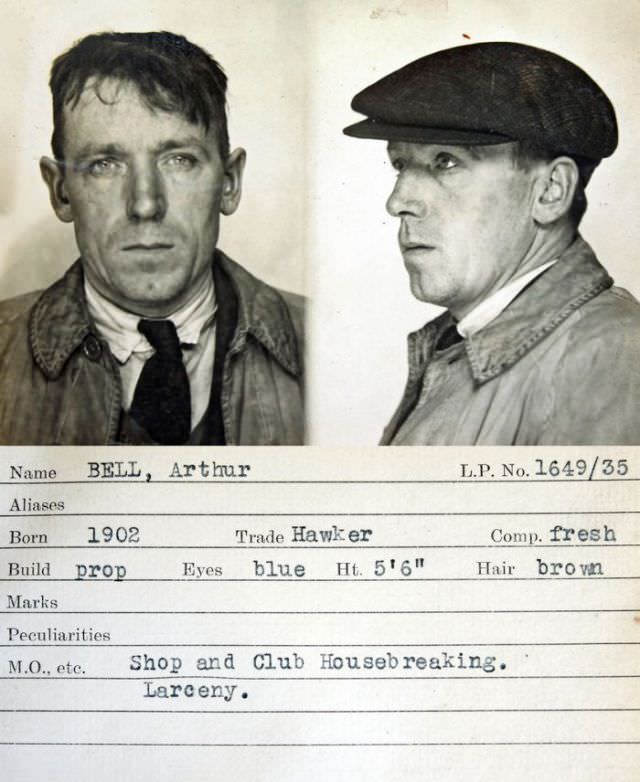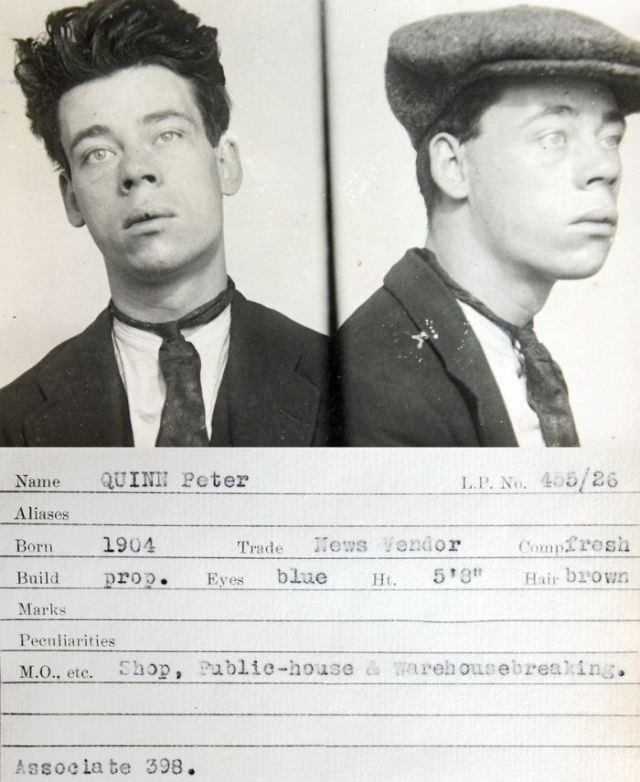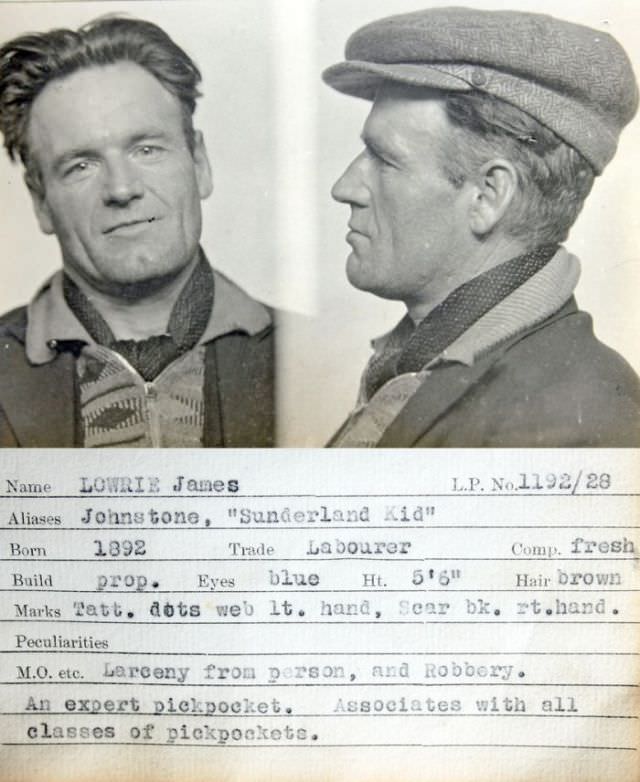The 1930s was a time of great change and upheaval in Newcastle upon Tyne, a bustling industrial city in the north of England. Amidst the economic hardship and social unrest, crime was also on the rise. A recently discovered police identification book from the 1930s offers a glimpse into the city’s underworld, capturing the faces of those who broke the law.
The book contains hundreds of mugshots, each one telling a story. Some individuals are clearly hardened criminals, with stern expressions and weathered faces. Others appear more innocent, perhaps caught in a moment of misfortune. The photographs were taken in a studio setting, with the subjects standing against a plain background. They are often accompanied by basic information such as name, age, and offense.
The mugshots reveal a diverse range of criminals, from petty thieves to violent offenders. There are pickpockets and conmen, shoplifters and burglars, as well as more serious offenders like murderers and bank robbers. The photographs also offer a glimpse into the social conditions of the time. Many of the criminals were young, suggesting that poverty and unemployment played a role in their actions.
The book is a valuable historical document, providing a unique insight into the criminal underworld of Newcastle in the 1930s. It also serves as a reminder of the consequences of crime and the importance of law and order. As we look back at these images, we can’t help but wonder about the lives of these individuals, their motivations, and their ultimate fates.
The mugshots show the faces of people who made bad choices, but they also remind us that everyone deserves a chance at redemption. By understanding the factors that contribute to crime, we can work to prevent it and create a safer society for all.
The Newcastle upon Tyne police identification book is a fascinating glimpse into the past. It offers a unique perspective on a dark chapter in the city’s history. As we study these images, we can learn from the mistakes of the past and work towards a brighter future.


